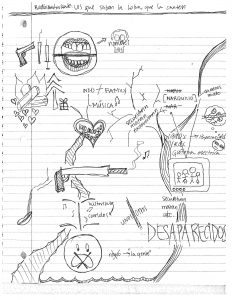- Audio self evaluations
- Listening Journals
- Teaching Listening: RA episodes: Useful tags, Trigger warnings
- Teaching Listening: ACTFL 2014 Presentation
- Teaching Listening: Shifting the Practice
- Teaching Listening: The Lesson Plan
- Teaching Listening: Listening Strategies
- Teaching Listening: Theory and Practice
- Teaching Listening: a series
Developing one’s listening and speaking abilities is a slow, sometimes invisible process. In a 16 week semester it sometimes feels as if nothing of any merit is happening. I understand this feeling far too well, and created some assignments in the class that would help to make them more aware of the progress they were making over time vs just focusing on their frustration about the here and now.
I asked my students last semester to create listening journals. I didn’t care what they looked like or how many pages they had, what mattered was that they were available any time a student was doing any form of listening practice and dedicated JUST to listening. It could be used when they were doing listening for our class, listening to a concert, sitting on out on the quad and listening to the sounds of the campus… it didn’t matter. The idea was to have them a place to take notes and to become more aware of the act of active listening.
I did not collect the listening journals. I did not grade them. Instead, at certain points in the semester I asked the students to cite something from their journal about their listening as proof that their abilities were improving. Initially they thought this wouldn’t be possible. But hindsight in a language class is always 700-78, that is, one never sees how far they’ve come… they only see what’s left undone. Happily they began to see through their own notes what I was seeing: improvement WAS HAPPENING.
In an upcoming post I will share an example of what the midterm or final self reflection looked like in this class, and how the listening journals were used for that task.
For the moment one really big breakthrough that we had with the listening journals and thanks to a blogpost I read by pone of my colleagues in Music Theory. In her blog Teaching Matters, Jan wrote about a video that she found on the New York Times website. For her, as a music theory professor, this was an extraordinary example of mapping out a song (and the formal analysis of its structure) in real time. For me it was an extraordinary example of a new way to listen that I shared with my students.
Feel free to watch:
For some of my students, the opportunity to combine drawing with note taking was exactly what they were looking for. Many had shared that as they listened to Radio Ambulante episodes they had image in their head. Drawing those images turned out to be a more effective way to chronicle the story and then talk about it in class the next day.
Here is one of my students drawings and used with their permission. It corresponds to Radio Ambulante’s story Los que saben la letra que la canten. (Click to make larger)
Going forward, I am going to be sure to show my students the video and encourage those who want to the opportunity to draw vs take notes…and to see if it helps capture their ideas and questions more effectively.
Do you use listening journals with your students? If you do, or if you have questions, feel free to share!

